Union Pacific has a total of 270 patents globally, out of which 186 have been granted. Of these 270 patents, more than 57% patents are active. Korea (South) is where Union Pacific has filed the maximum number of patents, followed by USA and Canada. Parallelly, Korea seems to be the main focused R&D center and United States of America is the origin country of Union Pacific.
Union Pacific was founded in 1862 by John J Koraleski. Union Pacific is a rail transportation company. The Company’s railroad hauls a variety of goods, including agricultural, automotive, and chemical products. As of February 2022, Union Pacific has a market cap of $156.93 Billion.
Do read about some of the most popular patents of Union Pacific which have been covered by us in this article and also you can find Union Pacific patents information, the worldwide patent filing activity and its patent filing trend over the years, and many other stats over Union Pacific patent portfolio.
How many patents does the CEO of Union Pacific have?
The CEO, Lance M. Fritz have 0 patents.
How many patents does Union Pacific have?
Union Pacific has a total of 270 patents globally. These patents belong to 208 unique patent families. Out of 270 patents, 154 patents are active.
How many Union Pacific patents are Alive/Dead?
Worldwide Patents
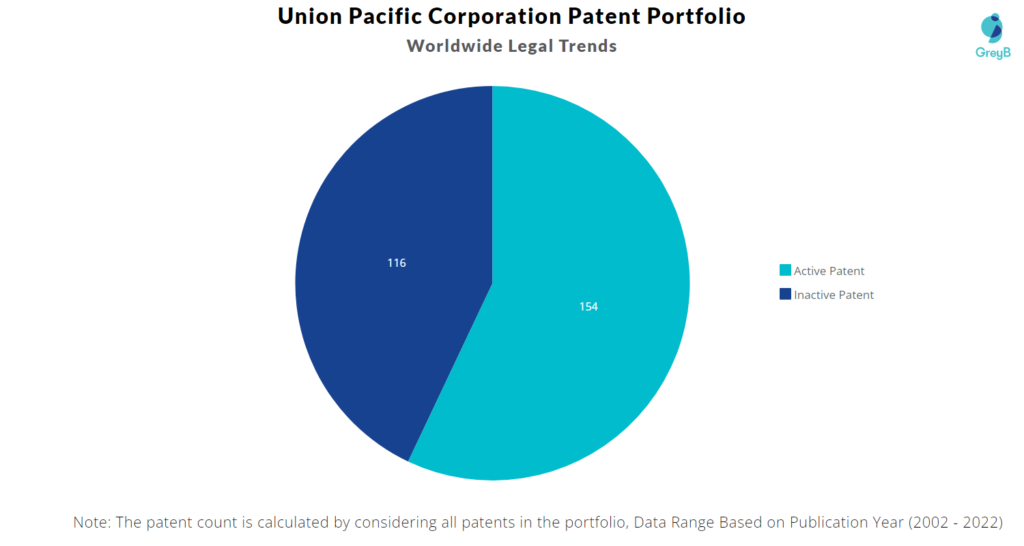
Patent Families

How Many Patents did Union Pacific File Every Year?
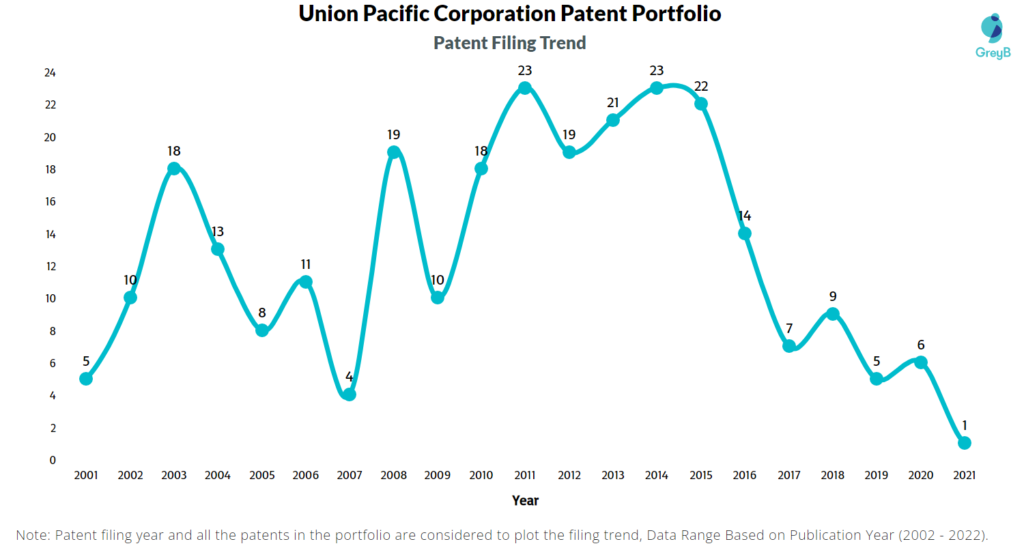
Are you wondering why there is a drop in patent filing for the last two years? It is because a patent application can take up to 18 months to get published. Certainly, it doesn’t suggest a decrease in the patent filing.
| Year of Patents Filing or Grant | Union Pacific Applications Filed | Union Pacific Patents Granted |
| 2011 | 23 | 7 |
| 2012 | 19 | 8 |
| 2013 | 21 | 14 |
| 2014 | 23 | 13 |
| 2015 | 22 | 15 |
| 2016 | 14 | 12 |
| 2017 | 7 | 18 |
| 2018 | 9 | 6 |
| 2019 | 5 | 10 |
| 2020 | 6 | 6 |
| 2021 | 1 | 5 |
| 2022 | – | 2 |
How Many Patents did Union Pacific File in Different Countries?
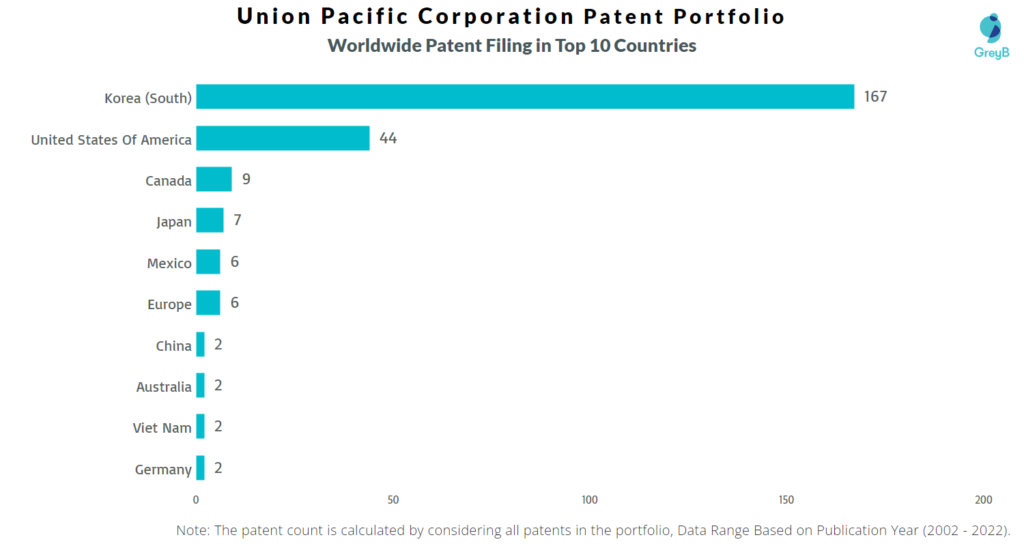
Countries in which Union Pacific Filed Patents
| Country | Patents |
| Korea (South) | 167 |
| United States Of America | 44 |
| Canada | 9 |
| Japan | 7 |
| Mexico | 6 |
| Europe | 6 |
| China | 2 |
| Australia | 2 |
| Viet Nam | 2 |
| Germany | 2 |
| Spain | 1 |
| Brazil | 1 |
| France | 1 |
| India | 1 |
Where are Research Centers of Union Pacific Patents Located?
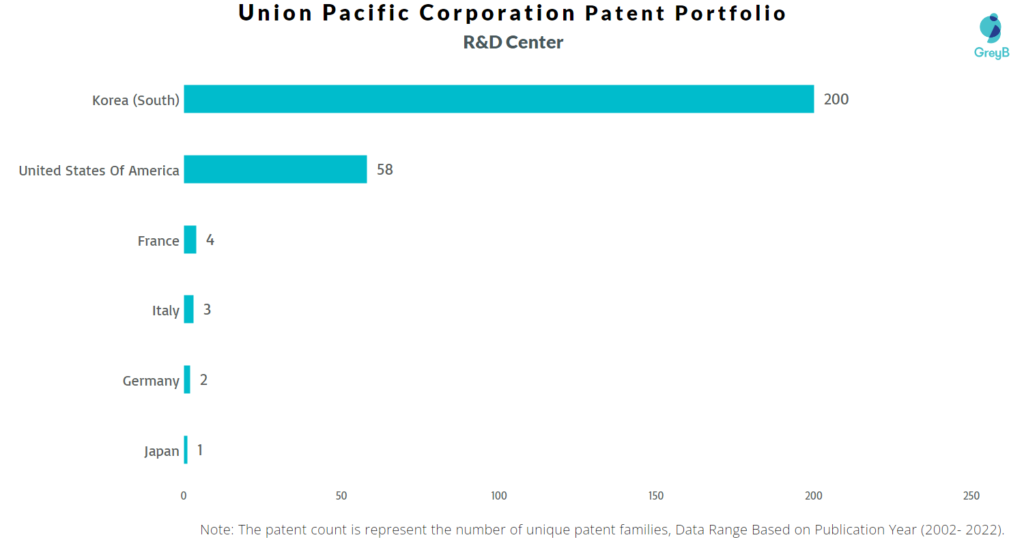
10 Best Union Pacific Patents
US6449486B1 is the most popular patent in the Union Pacific portfolio. It has received 220 citations so far from companies like Seeker Wireless Pty Limited, At&T and Pinc Solutions.
Below is the list of 10 most cited patents of Union Pacific:
| Publication Number | Citation Count |
| US6449486B1 | 220 |
| US6496777B2 | 109 |
| US6522884B2 | 58 |
| US20020114346A1 | 36 |
| US6813581B1 | 30 |
| US6474486B1 | 29 |
| US9033285B2 | 25 |
| WO2016056696A1 | 25 |
| US7843708B2 | 21 |
| EP1236980A1 | 17 |
What Percentage of Union Pacific US Patent Applications were Granted?
Union Pacific (Excluding its subsidiaries) has filed 31 patent applications at USPTO so far (Excluding Design and PCT applications). Out of these 27 have been granted leading to a grant rate of 87.1%.
Below are the key stats of Union Pacific patent prosecution at the USPTO.

Which Law Firms Filed Most US Patents for Union Pacific?
| Law Firm | Total Applications | Success Rate |
| Thompson Coburn | 13 | 100.00% |
| Pillsbury Winthrop Shaw Pittman | 8 | 75.00% |
| Kutak Rock | 3 | 100.00% |
| Advent Llp | 1 | 100.00% |
| Andre M Szuwalski | 1 | 0.00% |
| Jenkens & Gilchrist | 1 | 100.00% |
| Union Pacific Railroad Company | 1 | 0.00% |
Union Pacific CEO: It’s important we act as stewards to support the transition to a more sustainable future. The company has introduced a new approach to environmental, social and governance (ESG) issues. Building a Sustainable Future 2030 aims to improve the quality of life for everyone.
Union Pacific’s new business strategy is built on the foundation of safety as our No. 1 priority. It also addresses our most material ESG risks, while aligning with the United Nation’s Sustainable Development Goals. Within each area of concentration, we are identifying measurable targets.
Today, Union Pacific moves a ton of freight 454 miles on a single gallon of fuel. Rail remains the most fuel-efficient way to move freight over land by cutting greenhouse gas (GHG) emissions by up to 75% compared to commercial trucks. This ESG approach supports Union Pacific’s corporate strategy to be the best freight railroad in North America and also leverages our expertise and enables sustainable growth across our supply chain.
Over the next 10 years, we envision:
- New initiatives to recruit, develop and retain a diverse workforce that better reflects the world around us and prepares employees for the jobs of the future, allowing Union Pacific and the U.S. to better compete for global business.
- A seamless customer experience, and opportunities for large and small companies to leverage rail, making Union Pacific the go-to source for movement of goods.
- Actions to achieve GHG emissions consistent with science-based targets, waste initiatives supporting a circular economy, and addressing ongoing habitat loss and the need for clean water due to growing populations and urban sprawl.
- Increased support of minority- and women-owned businesses that strengthens local economies, as well as philanthropic aid that leads to safe places to live, family-supporting jobs and vibrant spaces that inspire people to live their best lives.
EXCLUSIVE INSIGHTS COMING SOON!
What are Union Pacific‘s key innovation segments?
What Technologies are Covered by Union Pacific?

The chart below distributes patents filed by Union Pacific in different countries on the basis of the technology protected in patents. It also represents the markets where Union Pacific thinks it’s important to protect particular technology inventions.

R&D Focus: How Union Pacific search focus changed over the years?
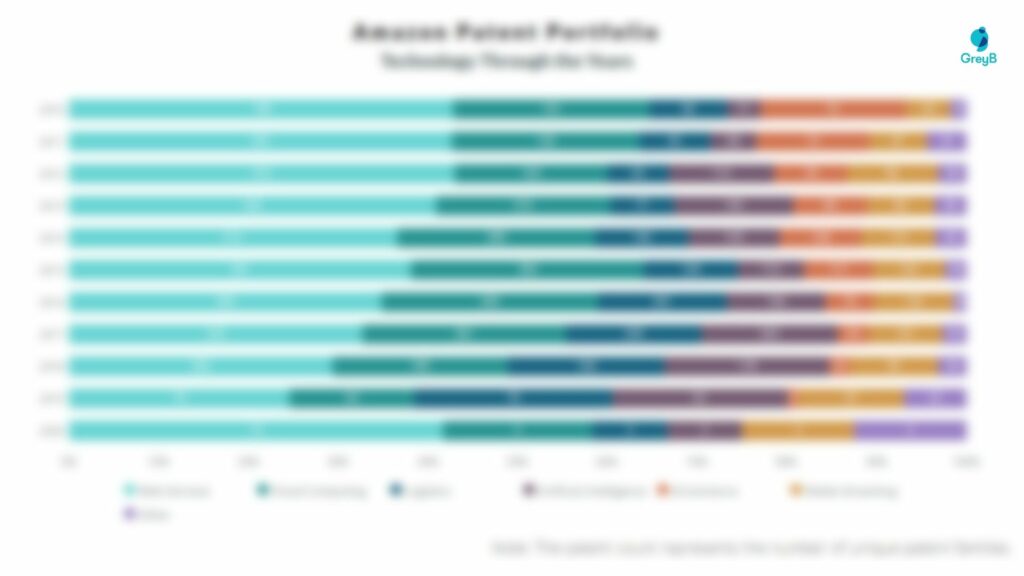
EXCLUSIVE INSIGHTS COMING SOON!
Interested in knowing about the areas of innovation that are being protected by Union Pacific?
